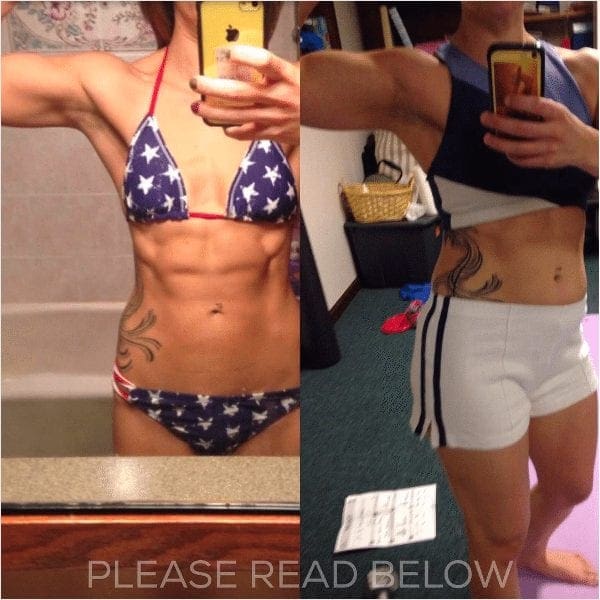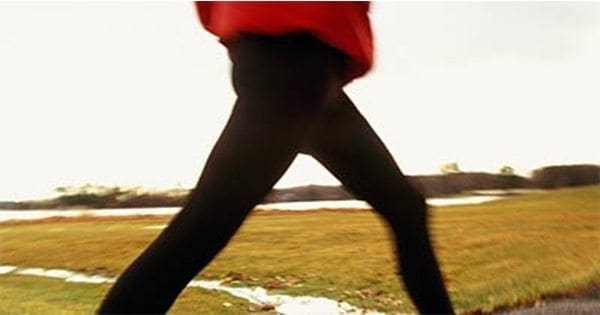
by Dr Alex Jimenez DC, APRN, FNP-BC, CFMP, IFMCP | Fitness, Health, Wellness
Add lean protein to every meal and snack
Weight-loss experts have always encouraged us to fill our plates with produce as a way to reap the benefits of its hunger-busting fiber, along with its antioxidants and other nutrients. But if you�ve been laser-focused on loading up on fruits and vegetables, your diet may need more lean protein. You should have a serving every few hours, says Brill. Nuts, eggs, and meat are more caloric than an apple or a pile of power greens�but the protein will keep you full longer and can lower your overall calorie intake for the day.
Moreover, a 2015 study published in The American Journal of Clinical Nutrition showed that incorporating protein into every meal and snack�starting with breakfast�helps control appetite and manage body weight. “A balanced diet that includes some protein helps fuel your muscles,” explains Brill. And as you already know, the more lean body mass you have, the higher your metabolic rate will be. Not to mention, your body has to work harder to digest protein, and through that process you burn even more calories.
RELATED: 13 High-Protein Breakfast Recipes and Ideas
Don�t protein-load. But do try making a more conscious effort to get small, regular doses: Eat eggs or almond butter in the a.m., for example. Make meat, fish, or legumes (like beans and peas) a key component of your lunch and dinner. And snack on hummus, nuts, kefir, or roasted chickpeas�all protein-packed picks to fuel your way to fit.

by Dr Alex Jimenez DC, APRN, FNP-BC, CFMP, IFMCP | Fitness, Health, Wellness
This article originally appeared on People.com.�
Erin is a self-proclaimed exercise addict.
The 39-year-old from San Diego, California reveals on Tuesday�s episode of�the syndicated daytime series The Doctors�that she builds her whole life around fitting in workout sessions.
�I exercise eight�hours a day,� she says in an exclusive clip. �I never get tired, I don�t get sore.�
Even Though Her Body Can Seemingly Handle Her Excessive Workouts
They do not make her feel good.
�I�ll cancel plans, I�ll cancel appointments. It�s been controlling my life,� she says. �I just can�t stop. It�s not giving me the rush that I used to feel just doing three to four hours.�
Erin says she squeezes in early morning workouts before work, and then returns to the gym when she is done for the day.
RELATED:�Why You Should Rethink Your Spinning Obsession
�Around 5 o�clock is when I work out, and then I go to work, and then I work out for another two hours,� she says.
But Erin also reveals she has been using exercise to avoid a painful trauma she experienced in the past.
�Eight months ago I got a message from a girl. It triggered a memory that I had suppressed for 30 years,� she says in the clip.
�Basically I�ve Been Adding On Exercise So I Can Just Forget.�
Host Dr. Travis Stork commends Erin for seeking the help she needs to fight her addiction.
�Before we get into where we need to go from here, we have to acknowledge where we are right now,� he says. �I�m so happy you realize that you need to change, because when I saw those blood pressure readings, there are things in medicine we call hypertensive urgency, and those blood pressure numbers [are] quite alarming.�
Gastroenterologist Dr. Jorge Rodriguez, who is working to treat Erin, says he was also alarmed by the results.
�In the six years that I�ve done the show with you, Erin is the most ill person, the sickest person that we�ve had on the show in my opinion,� he says.
To find out more of her test results and to see if�The Doctors can help Erin, check your local listings and tune into Tuesday�s episode.

Call Today!

by Dr Alex Jimenez DC, APRN, FNP-BC, CFMP, IFMCP | Fitness, Health, Wellness
Here�s to a different kind of body transformation. On Instagram yesterday, fitness influencer Anna Victoria shared a�follower�s photos that document her inspiring recovery from an extreme exercise habit.
In the “before” pic, @barbellkell_fbg is flexing her biceps in a bikini that shows off her chiseled six-pack.
What It Took To Get That Sculpted Bod Was Anything But Healthy

The photo on the left was taken a year and a half ago, when @barbellkell_fbg was committed to a 10-week plan that involved working out�five times a week, sometimes twice a day, and counting macros (down to chewing gum, vitamins, and cough drops), she explains in the caption. “[Z]ero balance, zero living, zero sustainability,” she wrote. “I had my full time job and this, which was another full time job basically.”
The strict dieting and intense workouts�took a serious toll. By the end of the plan, @barbellkell_fbg had a flat belly, and no trace of cellulite�but her energy levels had plummeted. “I could barely lift my feet to run on the treadmill,” she wrote. A blood test showed her white blood cell count was severely depressed. It was so low her doctor wanted to test her for cancer, she says.
After convincing him to do another blood test in a month, @barbellkell_fbg�committed to getting back to “normal.” She ate “to survive,” she said;�and in time, she gained fat and her white blood cell count recovered.
OD’ing on exercise�is a real thing, and it can�cause everything from fatigue to chronic achiness�even an elevated heart rate, which puts more demand on your ticker. “Overexercising�often contributes to pain,�dehydration, or electrolyte imbalances, all of which can lead to an increase in heart rate,” Kathryn Berlacher, MD, a cardiologist at the University of Pittsburgh School of Medicine, explained to�Health in a prior interview.
Signs That You’re Overdoing It At The Gym
And tips on how to scale back�check out our guide to the symptoms of overtraining.
As for�@barbellkell_fbg, she’s�come a long way in the last 18 months.�She now follows Anna Victoria�s Fit Body Guides, and eats what she wants in moderation. “I feel good. I am strong. I am happy,” she says�and�she loves the body she has now.

Call Today!

by Dr Alex Jimenez DC, APRN, FNP-BC, CFMP, IFMCP | Fitness, Posture, Wellness
You can get away with slouching at your desk. But looking hunched in your best friend�s wedding photos? That�s a no-no. We tapped fitness expert Lauren Williams for a series of exercises that will perfect your posture, so you can rock a strapless and stand tall at any social event this season. Watch this video for six moves that will sculpt your shoulders and elongate your torso so your wedding-day posture is as polished as possible.

1. YTW stretch:
Lay on your stomach with your hands reaching overhead �so your body forms the shape of the letter Y. Lift your chest slightly off the ground, then lower back down. Next, bring your arms out to your sides to form the shape of the letter T as you lift chest slightly off the ground. Lower back down. From here, bend arms at the elbows to form the shape of the letter W as you lift chest slightly off the ground. Return upper body to the ground and repeat sequence.
2. Renegade row:
Start in a high plank position with hands resting on dumbbells. From plank, lift your right arm into a row movement, lifting the dumbbell off the ground and bending the elbow to form a 90-degree angle. Return hand to mat and complete row movement on opposite side.
3. Best chest opener:
Starting on all fours, reach right hand to the ceiling, twisting the upper body open and looking up at your hand. Return to center and repeat reach and twist on the left side.
RELATED: This is the World�s Greatest Stretch (Seriously!)�
4. Bentover dumbbell flys:
From standing, lean your upper body forward so you�re slightly bent over with a dumbbell in each hand, arms extended long. Lift both arms out to shoulder height on each side with elbows slightly bent, squeezing your shoulder blades together. Return arms to starting position and repeat the fly movement.
5. Single-leg dumbbell balance with row:
Start from a standing position with a dumbbell in each hand. Carefully lower the upper body, creasing at the hips, while simultaneously lifting the right leg to hip height behind you. As you do this, lift weights one at a time toward your chest with the arm bending deeply at the elbow. Lower the leg to the floor as you lift your upper body back to standing upright and repeat movement with the left leg extended behind you.
6. All four shoulder opener:
Starting on all fours, reach the right arm out straight to the side, walking the hand along the floor as you twist the upper body toward the left. Return to center and repeat movement with the left arm extended.

by Dr Alex Jimenez DC, APRN, FNP-BC, CFMP, IFMCP | Athletes, Fitness, Health
Nike Debuted Its�Air Max Sneaker In 1987
featuring a visible air-cushioning unit in the sole designed to absorb shock and�more importantly, some may say�look really freakin’ cool. Over the years, Nike has retooled and reimagined the innovative design, releasing dozens of versions of the now-iconic shoe that’s beloved�by sneakerheads and athletes alike. A variety of new Air Max shoes are now available on Nike.com, and�on March 26�dubbed Air Max Day�Nike will release a running shoe called the Air VaporMax. Ahead of its release, fitness editors like me were�invited to log a few miles in the shoe, which is about 7 years in the making.
This Latest Silhouette
features plush Air Max cushioning across the entire foot and Nike’s ultra-flexible Flyknit upper. The first thing I noticed when I put the shoes�on was how comfortable they felt. I took a few bounces in them, and was also impressed by their light-as-a-feather feel.�As I started my run, I was amazed by how bouncy they felt�it�was as though I had lined up a�bunch of trampolines�leapt from one to the next. Another standout feature: the grip. Surprisingly, those air bags�on the soles really grab the ground. On a snowy, icy, or even rainy day, that would be an awesome feature.
One Potential Downside To This Shoe
The price. At $190, the Air VaporMax is pretty expensive. But, you can be assured that the shoe is built to last. During its initial testing phrase,�more than 350 runners�put 126,000 miles on these babies in a variety of climates and across myriad surfaces. Basically, Nike tried to kick this shoe’s butt. Kathy Gomez, vice president of Nike Innovation, claims your first mile and 1,000th mile will feel exactly the same in the Air VaporMax.
The bottom line:�If you are a fan of Nike Air, are in the market for a new pair of kicks, and are cool with a bit of a splurge, then I would�definitely consider these. They’re light, bouncy, and flexible�and they have 30 years of design innovation behind them. Sounds like a winner to us!

Call Today!

by Dr Alex Jimenez DC, APRN, FNP-BC, CFMP, IFMCP | Fitness, Mobility & Flexibility, Power & Strength
When you think of a ballerina body, you may picture a petite, slender�physique. But many dancers have rejected that rigid idea of what a ballerina is supposed to�look like�and instead, they’ve led a shift towards�embracing a diverse range of�athletic ballerina bodies. One woman who’s played a major role in that movement is none other than Misty Copeland, the iconic principle dancer at the American Ballet Theater.
�We are real women and ballerinas, muscular, feminine but also strong, lithe but also curvaceous,� Copeland writes in her new book, Ballerina Body: Dancing and Eating Your Way to a Leaner, Stronger, and More Graceful You�($30, amazon.com).�But Copeland doesn�t pretend she always felt so confident in her skin. �None of it was easy. Not my climb in the ballet world, not my arrival at a place of personal contentment and peace, not my journey to the body I stand in.�
Her book is her way of helping other women reach the same state of body confidence that she now exudes to the world. �I dream of sharing what I�ve learned�of showing women everywhere how to reach their body goals and achieve what they see as their best selves,” she says.
For Copeland, that has meant prioritizing exercise, as an integral and positive element of her day.��Working out, so essential to our mental and physical well-being, can and should be woven through every part of our lives,� Copeland says.
Below are four exercises that she incorporates in�her cross-training routine, to help maintain her ideal ballerina body��one that is lean but sinewy, with muscles that are long, sculpted, and toned.� But you certainly don’t have to be a dancer to reap the benefits of these challenging moves. Try them out to�get toned from head to (pointed)�toe.
Relev�
�Relev� means �raised,� or lifted, and describes the position when you rise onto the balls of your feet (demi-pointe) or onto the toes (pointe) of one or both feet.
a. Begin in first position. Demi-pli�, then stretch your knees and rise onto demi-pointe (relev�). Repeat this three times and old on the count of four. When done to music, the counts are to the timing of the music.
b. Repeat once. When you get stronger, you may do four repetitions.
Remember to hold your posture. The flexing and pointing also prepare and strengthen your ankles to allow you to stand on demi-pointe (or en pointe, if you are an advanced dancer).
Balancing Adagio
�Adagio� refers to the slow movement in the ballet technique. As much as the adagio is about flexibility, strength, and fluidity in the movement, learning this exercise on the floor will give you an advantage before approaching it standing. On the floor you acquire a sense of balance and where your weight should be in order to leverage it to make you legs appear higher and more extended in opposition to our upper body.
This exercise should be done slowly to improve balance, alignment, abdominal strength, and stamina.
a. Start by sitting with your legs together on the floor in front of you.
b. Lift your legs into the air by bending your knees, holding the backs of your things with your hands with your legs still bent and parallel to each other.
c. Leaning back, with your back straight and the backs of your thighs (hamstrings) leaning into your hands, slowly lengthen both legs into the air until they are fully straight, making you into a V shape. Bend your knees so the tips of your toes touch the floor. Now do the same with each leg, alone, keeping the tips of the toes of your other leg posed on the floor.
d. Repeat the sequence, beginning with the other leg, when doing the single-leg section.
Seaweed

This exercise is great for freeing and lengthening the spine and for centering and strengthening the core.
a. Begin lying on your back, your legs together and parallel and your feet pointed.
b. Bend your legs slowly, bringing them off the floor, still bent, and lifting your feet off the floor as well, while your back hugs the ground.
c. Keeping your lower back on the floor and your shoulder blades drawn down toward your waist, curl your upper back off the floor, around your lower abs. Your arms should act like seaweed being moved by the motion of the tides, around and behind your lifted legs.
d. Float your upper back and arms down to the floor, legs still bent, body still energized.
e. Repeat four times, bringing your legs gently toward your head as your core and upper body lift, igniting the lower abdominal muscles.
f. After the last time, hold one hand or wrist (depending on the length of your arms) with the other, behind your thighs.
g. Lengthen your legs straight into the air, pressing the backs of your legs into your arms.
h. Propel your legs to the floor, arms still around them, until you get close to the floor. Then open your arms to the sides and move them forward toward your feet, over your head.
i. Your upper back should bend forward over your legs as you transition from lying to sitting, with the backs of your hands on the floor to help stabilize and keep the backs of your legs on the floor.
j. Roll down through your spine until your back is on the floor and you are in the starting position, with your shoulders relaxed. Repeat two to four times.
D�gag�
�D�gag� means �disengaged.� When preparing for d�gag�s in particular, but whenever you�re lying on the floor, you should feel like you are standing or jumping�not lying on the sand at the beach!
This exercise is good for length, strength, and alignment. Be sure to press the parts of your back and body that are touching the surface of the floor to the floor, allowing your working leg to float up, initiating the movement with your inner thighs and the backs of the legs rather than the top of your thighs (quadriceps).
a. Begin lying on your back with your feet in first position (heels together and toes apart, feet pointed).
b. Place your arms at your sides with your palms facing down; you can vary the positioning of your arms depending on what makes you comfortable, as long as your arms don�t go above your shoulders.
c. Keep your legs elongated, straight on the floor.
d. Use your palms and arms by pressing them to the floor. This will help to strengthen ?your core and align the spine.
e. Lift one leg two or three inches from the floor, with your toes still pointed out, by pressing the standing leg (again, whether you�re standing or lying on the floor, the standing leg is the one that is not moving; it helps to maintain balance), your arms, and your head into the floor. This will help you to lift the working leg while maintaining stability throughout your body. Do four d�gag�s with one leg front, then switch legs and do four with the other leg front.
f. Now do four d�gag�s to each side. For these, your working leg stays on the floor, brushing along the floor as it extends to the side. Do not disturb the balance of the pelvis or the back as you move the working leg.
Excerpted from the book BALLERINA BODY by Misty Copeland. Copyright  2017 by Misty Copeland. Reprinted with permission of Grand Central Life & Style. All rights reserved.
2017 by Misty Copeland. Reprinted with permission of Grand Central Life & Style. All rights reserved.

Call Today!

by Dr Alex Jimenez DC, APRN, FNP-BC, CFMP, IFMCP | Health, Nutrition, Wellness
Grapefruit
Even if you changed nothing else about your diet, eating half a grapefruit before each meal may help you lose up to a pound a week!
A compound in the tangy fruit can lower insulin, a fat-storage hormone, and that can lead to weight loss. It’s also a good source of protein, and because it’s at least 90% water, it can fill you up so you eat less.
Try this recipe: Ginger-Citrus Fruit Salad

by Dr Alex Jimenez DC, APRN, FNP-BC, CFMP, IFMCP | Health, Nutrition, Wellness
Spinach
Tender and flavorful, this leafy green is rich in iron, folic acid, and vitamin K. It also contains disease-fighting antioxidants beta-carotene and vitamin C, as well as the phytochemical lutein, which protects eyes against age-related macular degeneration. Use as a substitute for lettuce in salad, lightly saut� with shredded carrot, sliced mushrooms, and garlic for a savory omelet filling, or try this simple Seasoned Spinach recipe for a quick and nutritious side dish.

Call Today!

by Dr Alex Jimenez DC, APRN, FNP-BC, CFMP, IFMCP | Chiropractic
Best Nuts for Your Diet
Almonds, Cashews, Pistachios
All nuts are about equal in terms of calories per ounce, and in moderation, are all healthy additions to any diet. “Their mix of omega-3 fatty acids, protein, and fiber will help you feel full and suppress your appetite,” says Judy Caplan, RD, a spokesperson for the Academy of Nutrition and Dietetics.
The lowest-calorie nuts at 160 per ounce are almonds (23 nuts; 6 grams protein, 14 grams fat); cashews (16 to 18 nuts; 5 grams protein, 13 grams fat); and pistachios (49 nuts; 6 grams protein, 13 grams fat). Avoid nuts packaged or roasted in oil; instead, eat them raw or dry roasted, says Caplan. (Roasted nuts may have been heated in hydrogenated or omega-6 unhealthy fats, she adds, or to high temperatures that can destroy their nutrients.)
Watch the video: Guilt-Free Snack: Honey-and-Chili Glazed Almonds �

Call Today!

by Dr Alex Jimenez DC, APRN, FNP-BC, CFMP, IFMCP | Chiropractic
When you want to shed serious weight, walking might not even come to mind. But it should.
“Fast-paced walking, when combined with healthy eating, is hugely effective for weight loss,” says Art Weltman, PhD, director of exercise physiology at the University of Virginia. And those simple steps can have a big impact on your overall health, cutting your risk of everything from heart disease to depression. If your daily strolls haven’t made you skinny so far, your speed may be the problem. Many of us stride more like a window-shopper than a power walker. The goal�thankfully�isn’t crazy race-walker style; you just need to move at a challenging pace.
In studies, Weltman has found that women who do three short (about 30-minute) high-intensity walks plus two moderately paced recovery walks a week lose up to six times more abdominal fat than participants who simply stroll five days a week. (This despite the fact that both groups burn the exact same number of calories.)
The power walkers also drop about four times as much total body fat. “There is a strong relationship between intensity of exercise and fat-burning hormones,” says Weltman. “So if you’re exercising at a pace considered to be hard, you’re likely to release more of these hormones.” The best part: When women walk, deep abdominal fat is the first to go. That’s a scientific fact we can get excited about.
Another happy truth: Although you’re moving at a fast clip, power walking is still easier on the joints than running. “During walking one of your feet is always in contact with the ground,” says Weltman, “but during running there’s a float stage where your whole body is lifted in the air. Then you come back down and subject your body to the impact.”
That’s why walking is a smart long-term fitness plan. To get you off on the right foot, here’s a complete primer, from how to tweak your speed for maximum burn to what gear you need (hint: almost none). Follow the workouts and wisdom�along with healthy eating�and not only can you lose those extra 10 pounds in three weeks, but you will have a no-fuss plan that you can do anywhere, anytime.
Dial In Your Speed
To make sure your pace is on point, use these guidelines from exercise physiologist Tom Holland, author of Beat the Gym. For maximum fat burn, aim for 30 minutes at power-walk intensity three days a week (see the walking plan on the next page). That time can be completed all at once, or you can break it up into spurts with recovery strides (stroll or brisk walk) in between.
- Stroll. Think window-shopping pace, or an intensity of 4 on a scale of 10. It burns about 238 calories an hour.
- Brisk walk. This means an effort of 5 or 6 on a scale of 10. It burns up to 340 calories an hour (at a 3.5 to 4 mph pace). While you can gossip about Mad Men, you need to catch your breath every few sentences.
- Power walk. You’re torching off approximately 564 calories an hour (at a 4 to 5 mph pace). Moving at this clip, using your arms to help propel you forward and taking longer strides, your effort should be a 7 or 8 on a scale of 10. Talking is possible only in spurts of three or four words, but…you’d…rather…focus…on…breathing.
The Amped-Up Plan
This program from Holland mixes a regular walking workout with interval routines to help you reach your power-walking quota of 30 minutes, three times a week. Aim to walk on three nonconsecutive days and either rest or cross-train on the other ones. If you cross-train (think power yoga or swimming), you’ll help your body recover; and with our diet, you’ll progress more quickly to dropping up to 10 pounds in three weeks.
Tempo day
Burns about 220 calories:
- Warm-up: Stroll for 5 minutes.
- Workout: Maintain a power-walk intensity for 30 minutes.
- Cooldown: Stroll for 3 to 5 minutes.
Long-Interval Day
Burns about 355 calories:
- Warm-up: Stroll for 5 minutes.
- Interval Workout: Maintain a hard power-walk intensity (8 on a scale of 10) for 5 minutes. Recover at a brisk pace for 1 minute. Repeat for a total of 6 intervals.
- Cooldown: Stroll for 3 to 5 minutes.
Short-Interval Day
Burns about 405 calories:
- Warm-up: Stroll for 5 minutes.
- Interval Workout: Maintain a hard power-walk intensity (8 on a scale of 10) for 2 minutes. Recover at a brisk pace for 1 minute. Repeat for a total of 15 intervals.
- Cooldown: Stroll for 3 to 5 minutes.
Walk This Way
When it comes to walking, your body and brain know what to do. Makes sense�you’ve been doing it since you took those first wobbly baby steps. But with these three form fixes, you’ll maximize your burn, big time.
- Chin up. Your gaze shouldn’t be aimed at your feet, no matter how snazzy your sneakers are. Instead, focus on a point about 10 feet ahead of you. This will keep your stride longer and your neck comfortably in line with your spine.
- Activate your abs. When you brace your core�pulling your belly button toward your spine�you automatically trigger good posture.
- Squeeze your glutes. Your backside literally propels you through your walk. To get the most oomph�so you can go longer and faster�keep your glutes tight. Bad visual, good strategy: Imagine squeezing a winning lottery ticket between your cheeks.
4 Ways To Burn More Fat
So you’re the impatient type? Use these tricks to up the challenge and calorie burn.
- Add hills. When you hit the hills on a treadmill or in your neighborhood, you increase your calorie burn by nearly 20 percent�and that’s just on a 1 to 5 percent incline.
- Go off-road. Head out for a light but brisk hike and you’ll torch about 430 calories in just an hour. Credit the uneven terrain�which forces you to work harder. Sub this in for one of your weekly power walks.
- Swing your arms. With elbows bent at 90 degrees and hands in loose fists, move your arms in an arc, keeping elbows tight to your body. This helps drive you forward, says Weltman, builds upper-body strength and can increase your burn by up to 10 percent.
- Make longer strides. Instead of taking more steps, “work on increasing your stride length,” Weltman says. “You’ll cover more ground,” and that means more fat fried.
Itching To Run?
Let’s face it: Some of us would rather just run. But if you go from zero to Usain Bolt on your first outing, you might end up sidelined. Use this guide from Holland to transition from walking to running safely.
For the running newbie: Do this modified version of the Short-Interval Day (see “The Amped-Up Plan,” left) three times a week: Run for one minute (work up to two minutes over the course of a couple of weeks), walk for one minute and repeat for a total of 15 intervals. Do this for a few weeks, then transition to the Long-Interval Day, running for five minutes and walking for one, repeating for a total of six intervals. The goal is to eventually tackle Tempo Day�running for 30 minutes nonstop.
For the on-and-off runner: Assuming you have some running experience under your belt, you can dive right into the Long-Interval Day plan, subbing in running for the power walks. The intervals should be challenging, and the Tempo Day run should be done at a hard but comfortable pace.
For the gym-goer: You can also use this plan to cross-train, doing the exact same routines while on the elliptical machine, rowing machine or stationary bike.














 2017 by Misty Copeland. Reprinted with permission of Grand Central Life & Style. All rights reserved.
2017 by Misty Copeland. Reprinted with permission of Grand Central Life & Style. All rights reserved.























